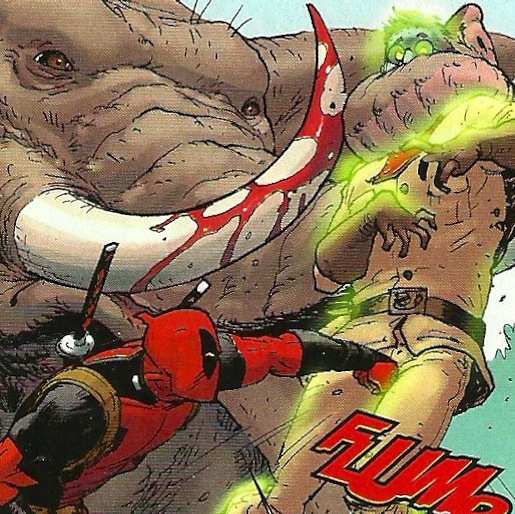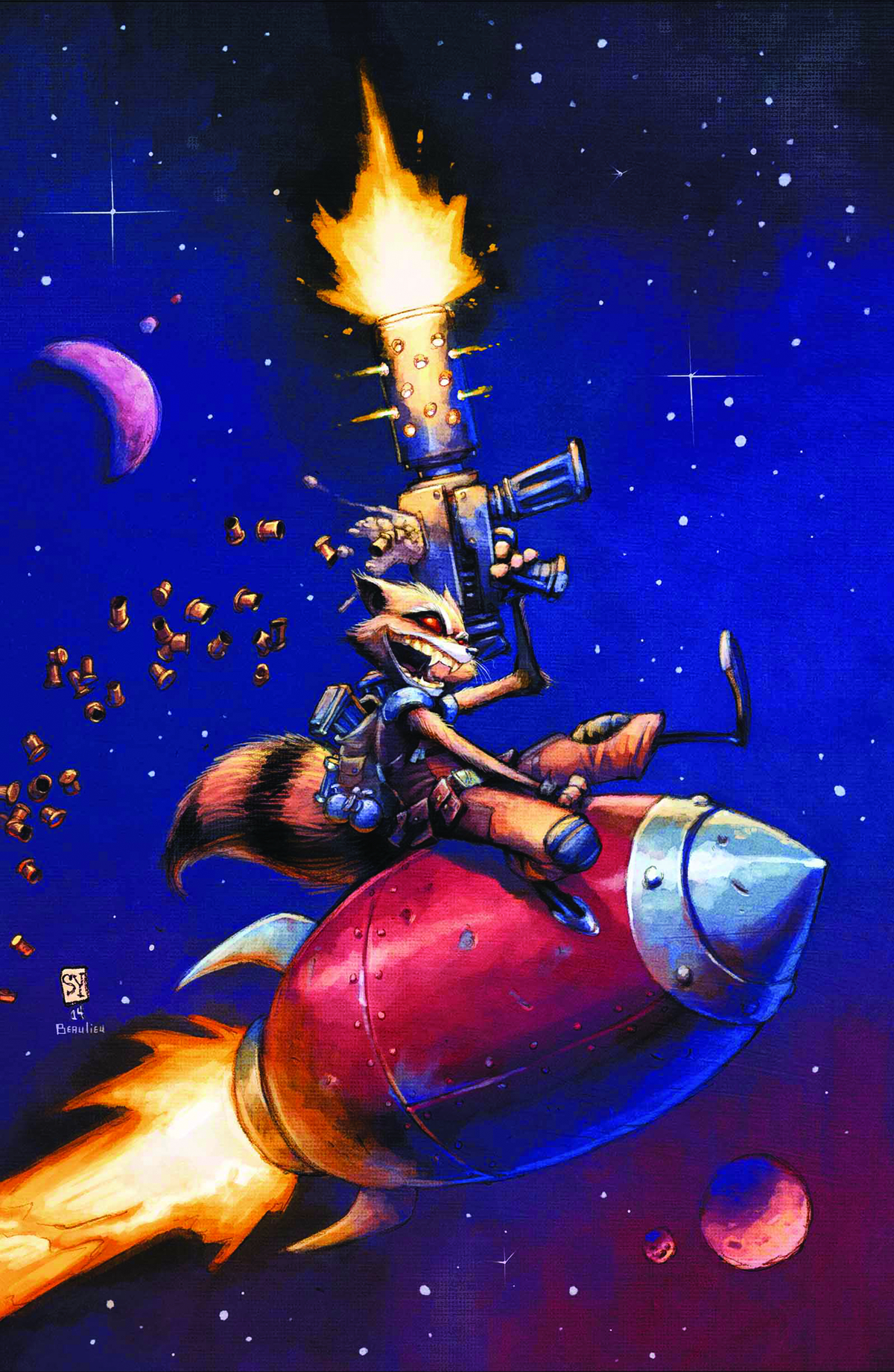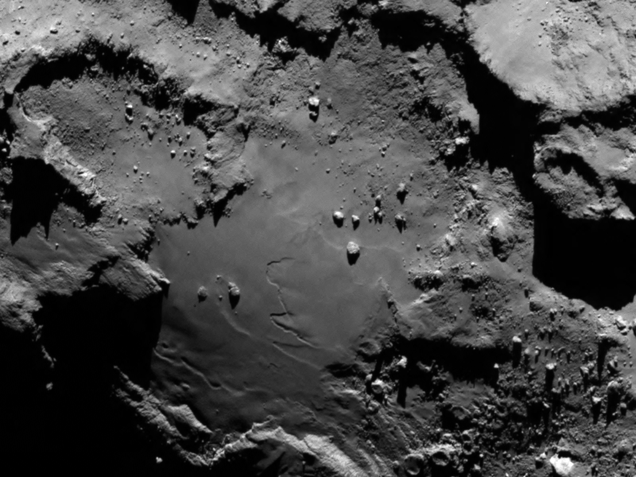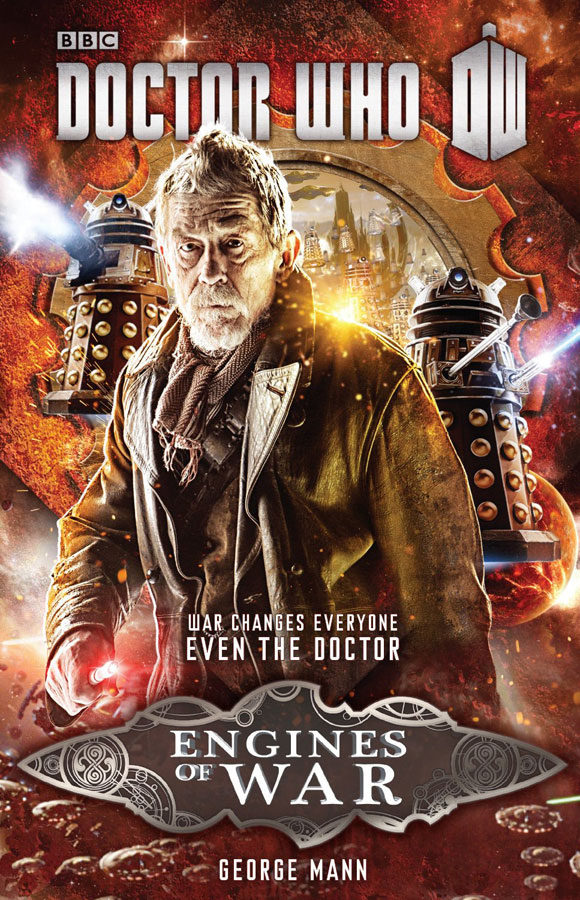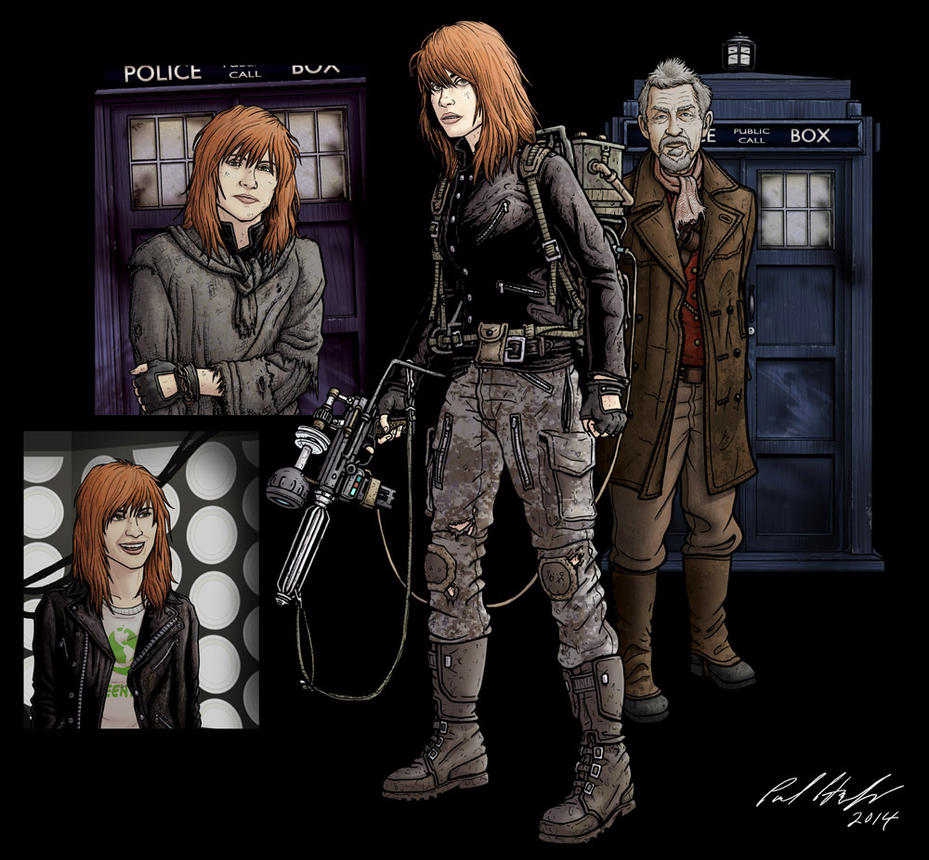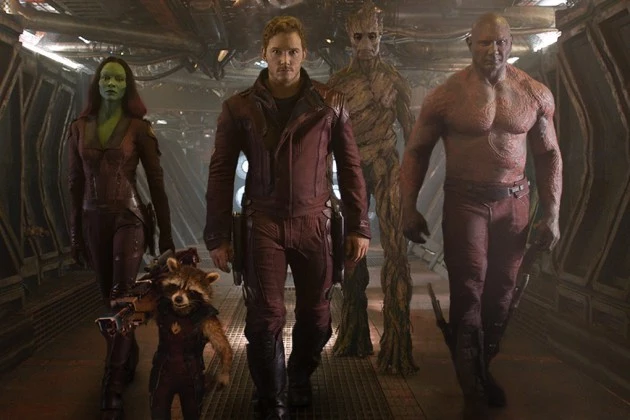Since the Daleks took the nation
by storm over the '63-'64 new year, they have been at the centre of
Doctor Who's appeal.
While the series has enjoyed the occasional Dalek-free stretch for a
few years, they are always back before long. Indeed, since the series
returned in 2005, there has been at least one Dalek-centric episode
in each broadcast season bar one, not to mention their continued
appearance as a background threat throughout the anniversary period.
It's a simple fact that each Doctor must meet the Daleks at least
once; even Paul McGann finally encountered them in the widely
available BBC7 radio series. Perhaps then, Into the Dalek
was an attempt to get this
necessity out of the way early on, and to cement Peter Capaldi's
status as the Doctor by placing him opposite the character's nemesis.
On the other hand, perhaps it was an attempt to do something new with a group of monsters that have appeared again and again throughout the series' history. After so many episodes in which the Daleks provide the threat, it can't be easy to find new things to do with them. To explore the morality and internal workings of the monsters allows the series to do something with them that is hasn't focused on before, rather than simply treating them as metallic menaces for the Doctor to defeat.
Unfortunately, the past weighs heavily down on this episode. Sure, it's clearly influenced by such miniaturisation movies as Fantastic Voyage and Innerspace, but it's Doctor Who's own history that is seen most clearly here. It's not simply that the Daleks have been done to death; although the fact that now three of the last four episodes have featured them doesn't help this feel any fresher. This episode invites comparisons with the one that so successfully relaunched the monsters, Rob Shearman's highly acclaimed Dalek (and to a further extant, his earlier audioplay Jubilee, upon which it was loosely based). A lone Dalek, at first disabled, able to get into the Doctor's head and lead him to question himself. It's the same philosophical ground, although after nine years it's certainly not to soon to be treading it again. No, it's Asylum of the Daleks that bears over this episode. For in the 2012 opener, we saw that yes, there was such a thing as a good Dalek. The fact that it was Oswin Oswald, one of Clara's time-flung iterations who had become that Dalek, makes it all the stranger that Into the Dalek makes no connection to that earlier episode.
Other comparisons are easy to make, both to early Doctor Who and more recent episodes. It's hardly a complaint that elements of this story bring to mind The Invisible Enemy or Carnival of Monsters in the minds of die-hard fans. The few people watching who will make these connections will, mostly, enjoy the spotting the similarities. However, it was only three years ago that we saw a miniaturisation story, in which our heroes were menaced by mechanical antibodies, and four since the Doctor and Amy got drenched in half-digested muck in a monster's belly. Doctor Who fans, in particular, notice these things, but even casual viewers are likely to find this episode overly familiar. Or is this a deliberate attempt to reassure viewers that this is, indeed, the same series as Let's Kill Hitler and The Beast Below?
Perhaps these are small quibbles. I did, after all, praise Deep Breath highly, and that was equally as derivative an episode, relying on even more elements of the past. Like Deep Breath, Into the Dalek was a fun, exciting and visually spectacular episode. Indeed, it may have been a better choice for the cinematic treatment than last week's dinosaur display. Certainly, the swooping spacecraft and Dalek attack are better viewed on a decent-sized TV screen. The low overnight figures suggest more people will be picking this up on catch-up services than previously, but anyone watching on iPads and other such devices will be missing out on an essential element of the episode.
Undeniably, it's Peter Capaldi who holds the episode together. With the silliness out of the way, the twelfth Doctor has now settled into his skin, and is a far more sombre figure. That's not to say he provides no comedy; the three-week late coffee and the utter rudeness of the man provide some exemplary funny moments. Yet it's his quieter, harsher and nastier moments that make you sit up. While the Doctor's line, promising a journey “into darkness” was over-emphasised in the series' early trailers, this is a more serious attitude for show. While we can imagine Matt Smith sitting Clara down and asking her, “Am I a good man?” it's hard to imagine him saying it through such a haunted expression. Even more so, while the eleventh Doctor may have sacrificed a man as “dead already,” it's hard to believe he would have used the situation to his advantage in that way, and certainly not in such a cold-hearted manner. The question though is at the heart of this episode. Not can there be such a thing as a good Dalek, but is there such a thing as a good Doctor?
We know the answers to both. The Daleks and the Doctor have been diametrically opposed since very early in the series' history, although not quite as far back as their first meeting on Skaro, as the Doctor here suggests. There, the Daleks were ruthless, frightening and inhuman, but above all they were scared and trying to survive. The Doctor, on the other hand, was untrustworthy, selfish, and careless. Some of this uncertainty about both parties has been returned by this episode. On the whole, though, the question has been answered. There can be a good Dalek, but only every once in a while as the story requires, for the basic narrative of Doctor Who places them as the ultimate evil. It is a stone upon which the series is built. We may have heroic Silurians, Sontarans, even Cybermen, the Daleks cannot be redeemed. Equally, the Doctor has, for all his mistakes and questionable actions, proven time and again that yes, he is a good man. Of course, this is a new Doctor, older, harsher and moulded by centuries of defensive war against such foes as the Daleks. So far, though, there isn't enough to give us cause to question him. A couple of hours of Capaldi being rude isn't enough to dim the memories of Smith being cuddly.
 For all the elements that reach
back to the past, though, there are plenty that are looking forward.
Clara seems almost surplus to requirements here, as Zawe Ashton's
Journey Blue takes up much of the mantle of the companion, and is
able to face down the Doctor even as he gets to her. While Clara
gives as good as she gets, it can't be said that she has much place
in the Doctor's story here. On the other hand, her own story is
working better than ever, and her job at Coal Hill School has
provided more sense of her as a real character. Equally good is her
flirtatious interaction with Danny Pink. While we saw less of Samuel
Anderson's new character than expected, he made an impression in
those few minutes, both as an amiable and delightfully awkward young
teacher, and as an old soldier hiding something in his past. A little
mystery is welcome, so long as it doesn't swamp the character. It's
certainly far more interesting than the mystery of Missy, in her
teashop heaven, although there is a certain parallel between her
acquisition of Gretchen and the Doctor's last-second rescue of
Journey.
For all the elements that reach
back to the past, though, there are plenty that are looking forward.
Clara seems almost surplus to requirements here, as Zawe Ashton's
Journey Blue takes up much of the mantle of the companion, and is
able to face down the Doctor even as he gets to her. While Clara
gives as good as she gets, it can't be said that she has much place
in the Doctor's story here. On the other hand, her own story is
working better than ever, and her job at Coal Hill School has
provided more sense of her as a real character. Equally good is her
flirtatious interaction with Danny Pink. While we saw less of Samuel
Anderson's new character than expected, he made an impression in
those few minutes, both as an amiable and delightfully awkward young
teacher, and as an old soldier hiding something in his past. A little
mystery is welcome, so long as it doesn't swamp the character. It's
certainly far more interesting than the mystery of Missy, in her
teashop heaven, although there is a certain parallel between her
acquisition of Gretchen and the Doctor's last-second rescue of
Journey.
When Danny does finally meet the Doctor, it promises to be very interesting indeed. The Doctor has long disliked the military, but here his attitudes are particularly pig-headed and arrogant. In fact, he is spectacularly hypocritical, seeing that the crew of the Aristotle are fighting a defensive war against the Daleks, the beings he so hates and himself fought against during a centuries-long campaign. To abandon a potential companion because she's a soldier is unlike the Doctor we know. We'd expect him to be enthused by her potential, her willingness to disobey orders. Maybe he'd even see her as a challenge. Here, though, he just dismisses her, and if her is equally dismissive of Danny, there will be trouble with Clara.
Perhaps if the remaining crew got a little more exploration, he might feel more agreeable to them. While Laura Dos Santos has one shining scene as Gretchen, it's only Michael Smiley as Colonel Blue who makes any impression. While many of us will remember him best as Tyres from Spaced, his credits are numerous and he is perhaps best known as that excellent actor who never gets a big enough part. Praise is due, as always, to Nicholas Briggs. How this man can still find ways to instil new inflections and character into the voice of the Daleks is a mystery. He is quite astonishing.
What this episode could really have done with is time. Deep Breath has taken some criticism for being too long, but I felt that it needed that extra room to breathe. Back to forty-five minutes, Into the Dalek feels rushed and ill thought out. Hour long episodes, or longer, would provide much needed space for clarity and development. While there are still longer, quieter scenes that are given the time they need, the remaining, plot-heavy scenes suffer by being compressed even further. Perhaps with more time, seeming errors would prove to be explicable. It's easy enough to overlook things like the miraculous clothes-cleaning pipes. However, the very core problem of the story is poorly considered. The Doctor recognises immediately that the Dalek's supposed goodness is, in fact, the result of a malfunction, and only this malfunction is preventing it's “evil engineering” from taking hold. Yet he proceeds to repair that malfunction, and is astonished when the Dalek instantly returns to its murderous ways. It's a moment of idiocy that hard to forgive even as a plot expedient.
Perhaps there is some future for Rusty the Dalek. While a good Dalek may only exist fleetingly, there is at least a Dalek now at large with a burning hatred for his own kind. The Daleks will most definitely be back, most likely sooner rather than later, and it is possible that Rusty will be along with them. As a warped mirror to the Doctor, there may be story potential for this Dalek yet.
On the other hand, perhaps it was an attempt to do something new with a group of monsters that have appeared again and again throughout the series' history. After so many episodes in which the Daleks provide the threat, it can't be easy to find new things to do with them. To explore the morality and internal workings of the monsters allows the series to do something with them that is hasn't focused on before, rather than simply treating them as metallic menaces for the Doctor to defeat.
Unfortunately, the past weighs heavily down on this episode. Sure, it's clearly influenced by such miniaturisation movies as Fantastic Voyage and Innerspace, but it's Doctor Who's own history that is seen most clearly here. It's not simply that the Daleks have been done to death; although the fact that now three of the last four episodes have featured them doesn't help this feel any fresher. This episode invites comparisons with the one that so successfully relaunched the monsters, Rob Shearman's highly acclaimed Dalek (and to a further extant, his earlier audioplay Jubilee, upon which it was loosely based). A lone Dalek, at first disabled, able to get into the Doctor's head and lead him to question himself. It's the same philosophical ground, although after nine years it's certainly not to soon to be treading it again. No, it's Asylum of the Daleks that bears over this episode. For in the 2012 opener, we saw that yes, there was such a thing as a good Dalek. The fact that it was Oswin Oswald, one of Clara's time-flung iterations who had become that Dalek, makes it all the stranger that Into the Dalek makes no connection to that earlier episode.
Other comparisons are easy to make, both to early Doctor Who and more recent episodes. It's hardly a complaint that elements of this story bring to mind The Invisible Enemy or Carnival of Monsters in the minds of die-hard fans. The few people watching who will make these connections will, mostly, enjoy the spotting the similarities. However, it was only three years ago that we saw a miniaturisation story, in which our heroes were menaced by mechanical antibodies, and four since the Doctor and Amy got drenched in half-digested muck in a monster's belly. Doctor Who fans, in particular, notice these things, but even casual viewers are likely to find this episode overly familiar. Or is this a deliberate attempt to reassure viewers that this is, indeed, the same series as Let's Kill Hitler and The Beast Below?
Perhaps these are small quibbles. I did, after all, praise Deep Breath highly, and that was equally as derivative an episode, relying on even more elements of the past. Like Deep Breath, Into the Dalek was a fun, exciting and visually spectacular episode. Indeed, it may have been a better choice for the cinematic treatment than last week's dinosaur display. Certainly, the swooping spacecraft and Dalek attack are better viewed on a decent-sized TV screen. The low overnight figures suggest more people will be picking this up on catch-up services than previously, but anyone watching on iPads and other such devices will be missing out on an essential element of the episode.
Undeniably, it's Peter Capaldi who holds the episode together. With the silliness out of the way, the twelfth Doctor has now settled into his skin, and is a far more sombre figure. That's not to say he provides no comedy; the three-week late coffee and the utter rudeness of the man provide some exemplary funny moments. Yet it's his quieter, harsher and nastier moments that make you sit up. While the Doctor's line, promising a journey “into darkness” was over-emphasised in the series' early trailers, this is a more serious attitude for show. While we can imagine Matt Smith sitting Clara down and asking her, “Am I a good man?” it's hard to imagine him saying it through such a haunted expression. Even more so, while the eleventh Doctor may have sacrificed a man as “dead already,” it's hard to believe he would have used the situation to his advantage in that way, and certainly not in such a cold-hearted manner. The question though is at the heart of this episode. Not can there be such a thing as a good Dalek, but is there such a thing as a good Doctor?
We know the answers to both. The Daleks and the Doctor have been diametrically opposed since very early in the series' history, although not quite as far back as their first meeting on Skaro, as the Doctor here suggests. There, the Daleks were ruthless, frightening and inhuman, but above all they were scared and trying to survive. The Doctor, on the other hand, was untrustworthy, selfish, and careless. Some of this uncertainty about both parties has been returned by this episode. On the whole, though, the question has been answered. There can be a good Dalek, but only every once in a while as the story requires, for the basic narrative of Doctor Who places them as the ultimate evil. It is a stone upon which the series is built. We may have heroic Silurians, Sontarans, even Cybermen, the Daleks cannot be redeemed. Equally, the Doctor has, for all his mistakes and questionable actions, proven time and again that yes, he is a good man. Of course, this is a new Doctor, older, harsher and moulded by centuries of defensive war against such foes as the Daleks. So far, though, there isn't enough to give us cause to question him. A couple of hours of Capaldi being rude isn't enough to dim the memories of Smith being cuddly.
 For all the elements that reach
back to the past, though, there are plenty that are looking forward.
Clara seems almost surplus to requirements here, as Zawe Ashton's
Journey Blue takes up much of the mantle of the companion, and is
able to face down the Doctor even as he gets to her. While Clara
gives as good as she gets, it can't be said that she has much place
in the Doctor's story here. On the other hand, her own story is
working better than ever, and her job at Coal Hill School has
provided more sense of her as a real character. Equally good is her
flirtatious interaction with Danny Pink. While we saw less of Samuel
Anderson's new character than expected, he made an impression in
those few minutes, both as an amiable and delightfully awkward young
teacher, and as an old soldier hiding something in his past. A little
mystery is welcome, so long as it doesn't swamp the character. It's
certainly far more interesting than the mystery of Missy, in her
teashop heaven, although there is a certain parallel between her
acquisition of Gretchen and the Doctor's last-second rescue of
Journey.
For all the elements that reach
back to the past, though, there are plenty that are looking forward.
Clara seems almost surplus to requirements here, as Zawe Ashton's
Journey Blue takes up much of the mantle of the companion, and is
able to face down the Doctor even as he gets to her. While Clara
gives as good as she gets, it can't be said that she has much place
in the Doctor's story here. On the other hand, her own story is
working better than ever, and her job at Coal Hill School has
provided more sense of her as a real character. Equally good is her
flirtatious interaction with Danny Pink. While we saw less of Samuel
Anderson's new character than expected, he made an impression in
those few minutes, both as an amiable and delightfully awkward young
teacher, and as an old soldier hiding something in his past. A little
mystery is welcome, so long as it doesn't swamp the character. It's
certainly far more interesting than the mystery of Missy, in her
teashop heaven, although there is a certain parallel between her
acquisition of Gretchen and the Doctor's last-second rescue of
Journey.
When Danny does finally meet the Doctor, it promises to be very interesting indeed. The Doctor has long disliked the military, but here his attitudes are particularly pig-headed and arrogant. In fact, he is spectacularly hypocritical, seeing that the crew of the Aristotle are fighting a defensive war against the Daleks, the beings he so hates and himself fought against during a centuries-long campaign. To abandon a potential companion because she's a soldier is unlike the Doctor we know. We'd expect him to be enthused by her potential, her willingness to disobey orders. Maybe he'd even see her as a challenge. Here, though, he just dismisses her, and if her is equally dismissive of Danny, there will be trouble with Clara.
Perhaps if the remaining crew got a little more exploration, he might feel more agreeable to them. While Laura Dos Santos has one shining scene as Gretchen, it's only Michael Smiley as Colonel Blue who makes any impression. While many of us will remember him best as Tyres from Spaced, his credits are numerous and he is perhaps best known as that excellent actor who never gets a big enough part. Praise is due, as always, to Nicholas Briggs. How this man can still find ways to instil new inflections and character into the voice of the Daleks is a mystery. He is quite astonishing.
What this episode could really have done with is time. Deep Breath has taken some criticism for being too long, but I felt that it needed that extra room to breathe. Back to forty-five minutes, Into the Dalek feels rushed and ill thought out. Hour long episodes, or longer, would provide much needed space for clarity and development. While there are still longer, quieter scenes that are given the time they need, the remaining, plot-heavy scenes suffer by being compressed even further. Perhaps with more time, seeming errors would prove to be explicable. It's easy enough to overlook things like the miraculous clothes-cleaning pipes. However, the very core problem of the story is poorly considered. The Doctor recognises immediately that the Dalek's supposed goodness is, in fact, the result of a malfunction, and only this malfunction is preventing it's “evil engineering” from taking hold. Yet he proceeds to repair that malfunction, and is astonished when the Dalek instantly returns to its murderous ways. It's a moment of idiocy that hard to forgive even as a plot expedient.
Perhaps there is some future for Rusty the Dalek. While a good Dalek may only exist fleetingly, there is at least a Dalek now at large with a burning hatred for his own kind. The Daleks will most definitely be back, most likely sooner rather than later, and it is possible that Rusty will be along with them. As a warped mirror to the Doctor, there may be story potential for this Dalek yet.










